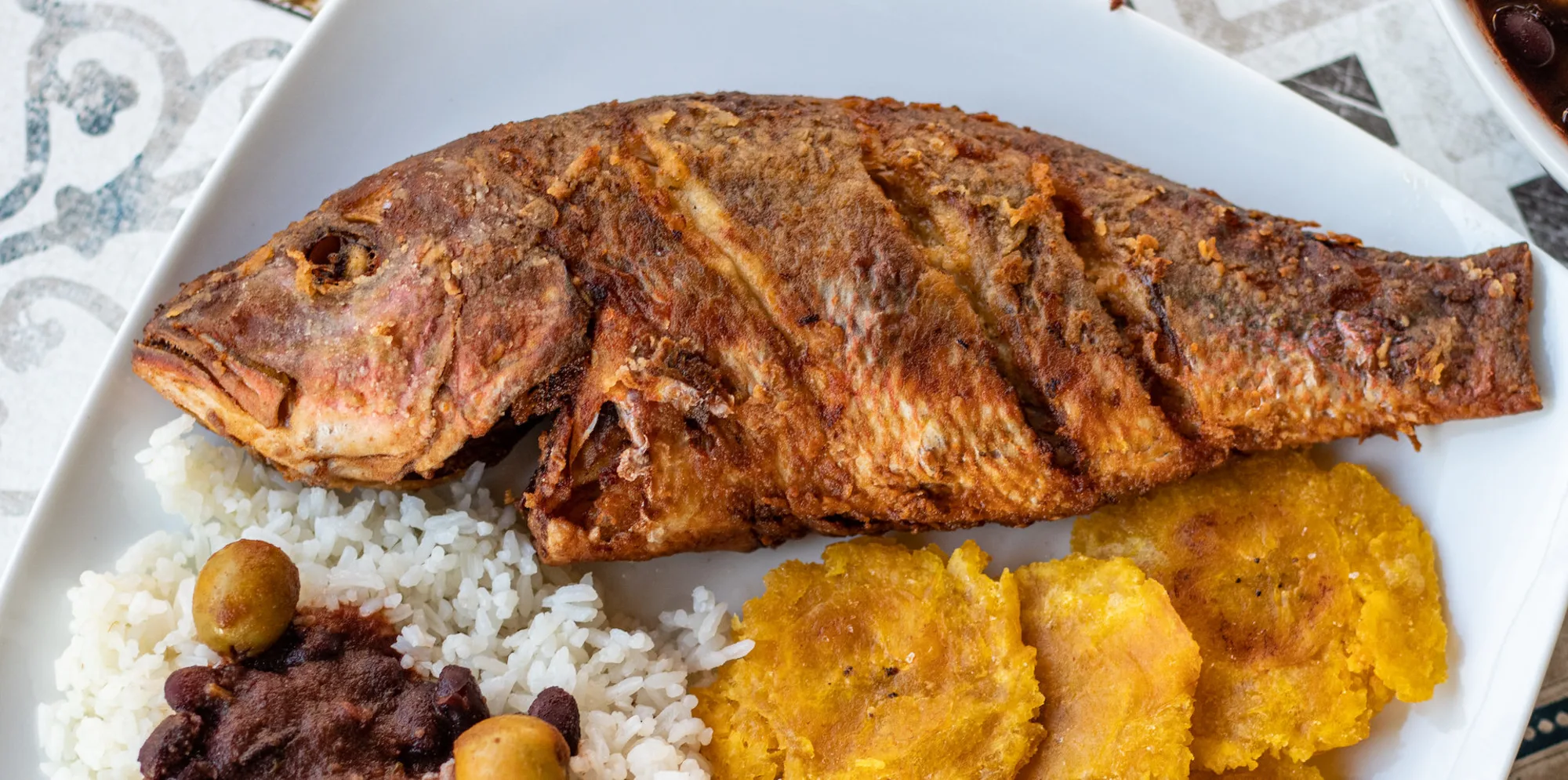
Pescado Frito
Whole fish marinated in lime juice and seasonings, then fried until crispy. Usually served with tostones.
Ingredients
- •Whole red snapper or sea bass
- •Lime juice
- •Garlic
- •Dominican oregano
- •Salt
- •Black pepper
- •Vegetable oil
- •Flour for coating
Instructions
Marinate
Season fish with lime and spices
Prepare
Score fish and coat lightly with flour
Fry
Deep fry until golden and crispy
Pescado Frito, or fried whole fish, is a beloved Dominican dish that perfectly captures the coastal essence of Caribbean cuisine. This simple yet flavorful preparation transforms fresh fish into a crispy, golden delight that's a staple at beachside restaurants and family gatherings throughout the Dominican Republic.
The beauty of Pescado Frito lies in its straightforward preparation method that lets the natural flavors of fresh fish shine through. The process begins with a bright citrus marinade, typically using lime juice, combined with garlic and Dominican oregano - a special variety that's more pungent than its Mediterranean cousin. This marinade not only adds flavor but also helps firm up the fish's flesh, preparing it for the perfect crispy exterior.
While red snapper is the traditional choice, Dominican cooks often use whatever fresh catch is available, from sea bass to grouper. The key to perfection lies in scoring the fish - making shallow cuts on both sides - which allows the seasonings to penetrate deeper and ensures even cooking. A light coating of flour just before frying creates that coveted crispy exterior while keeping the inside moist and tender.
In Dominican homes and restaurants, Pescado Frito is typically served whole - head and tail intact - accompanied by traditional sides like tostones (twice-fried green plantains), lime wedges, and a simple salad of shredded cabbage or lettuce. Some regions add their own twist by serving it with coconut rice or moro de guandules (rice with pigeon peas).
For those watching their diet, it's worth noting that while fish itself is a healthy protein rich in omega-3 fatty acids, the frying process does add considerable calories. Health-conscious diners might want to remove the skin or opt for a smaller portion. Those with seafood allergies should obviously avoid this dish, and diners should be careful with the small bones typical in whole fish preparations.
The dish is naturally gluten-free if prepared without flour coating, though you'll want to confirm this when ordering at restaurants. Despite being fried, when prepared properly with fresh oil at the right temperature, the fish shouldn't be greasy - instead, it should have a light, crispy exterior that gives way to moist, flaky flesh inside.
